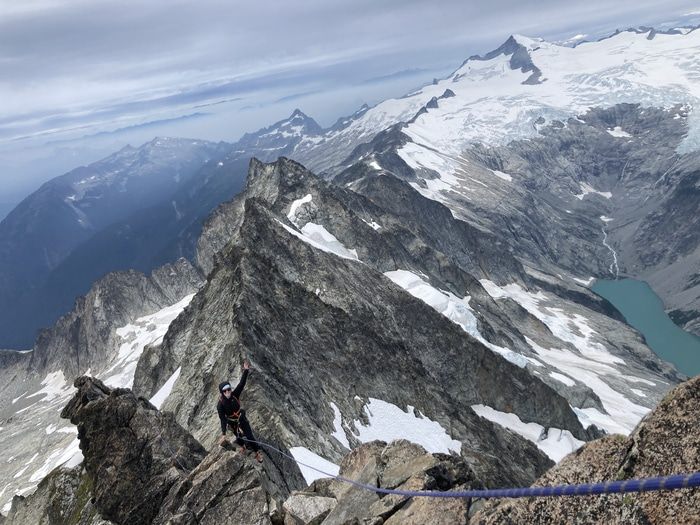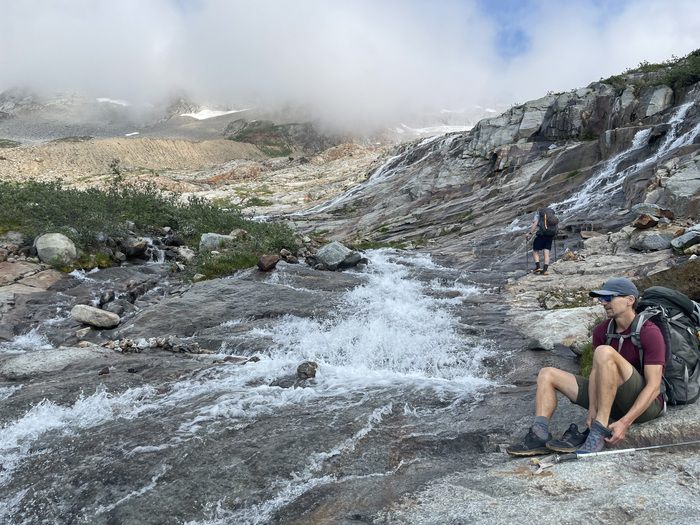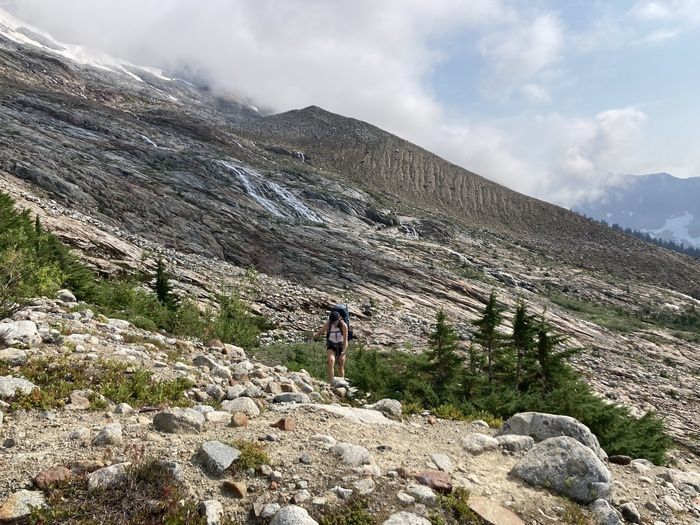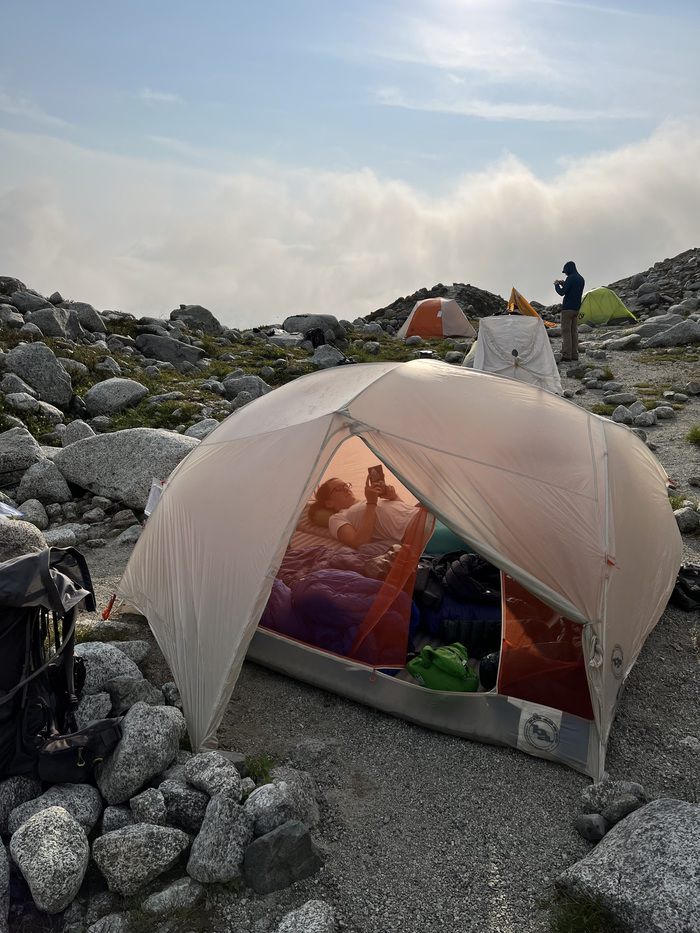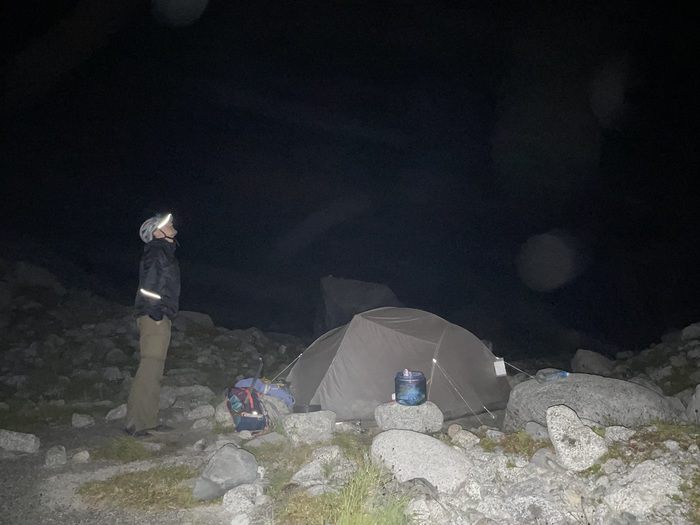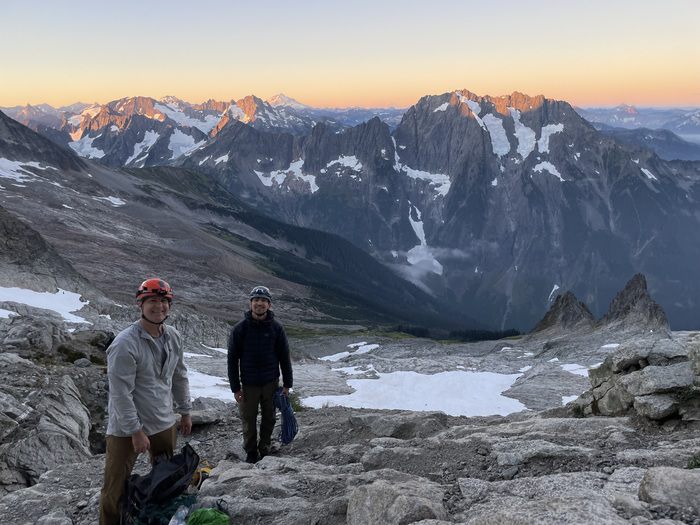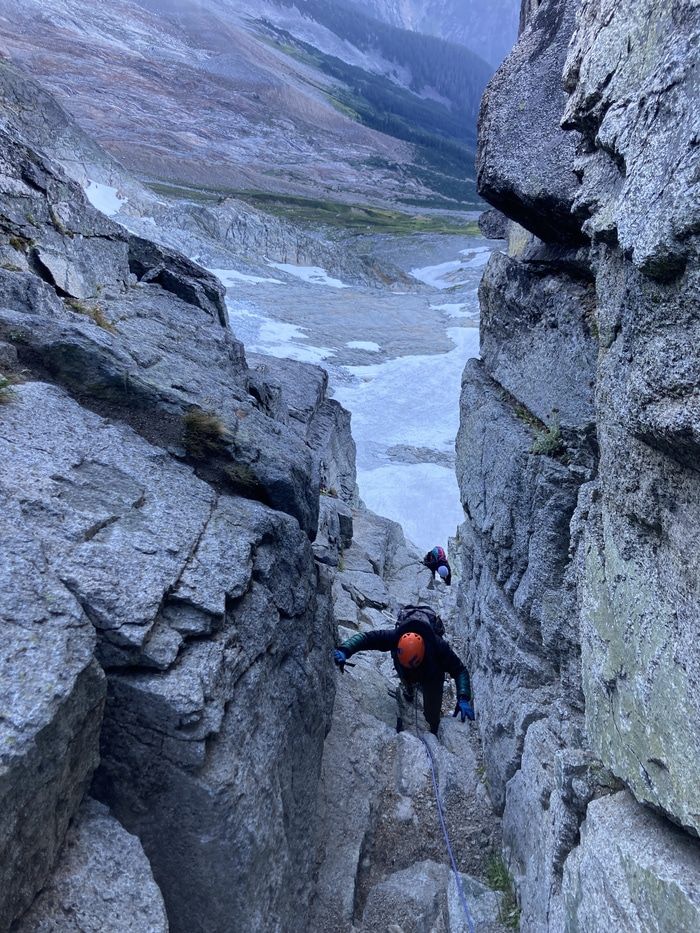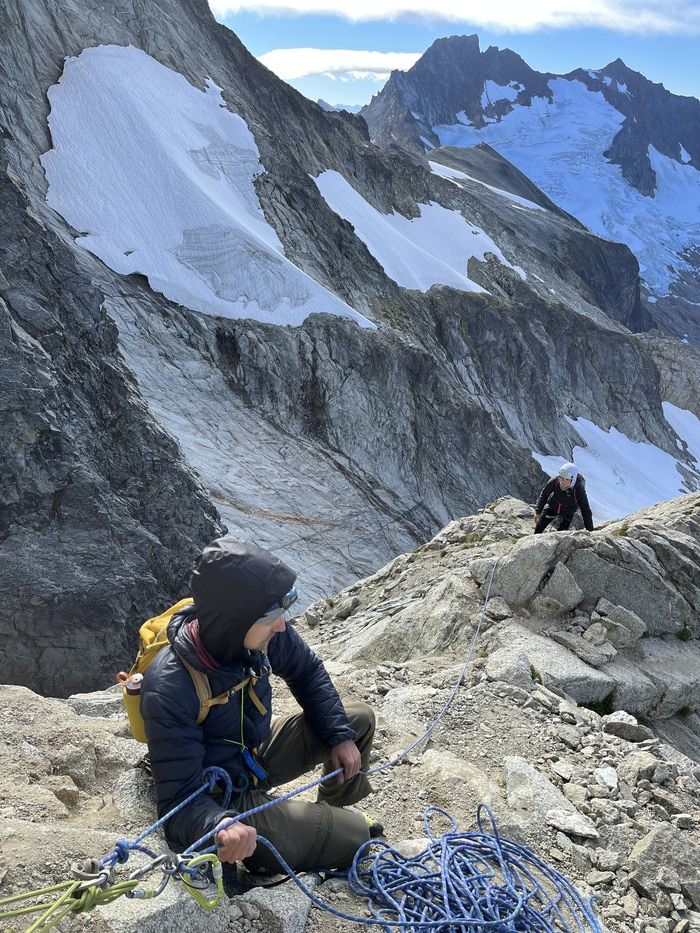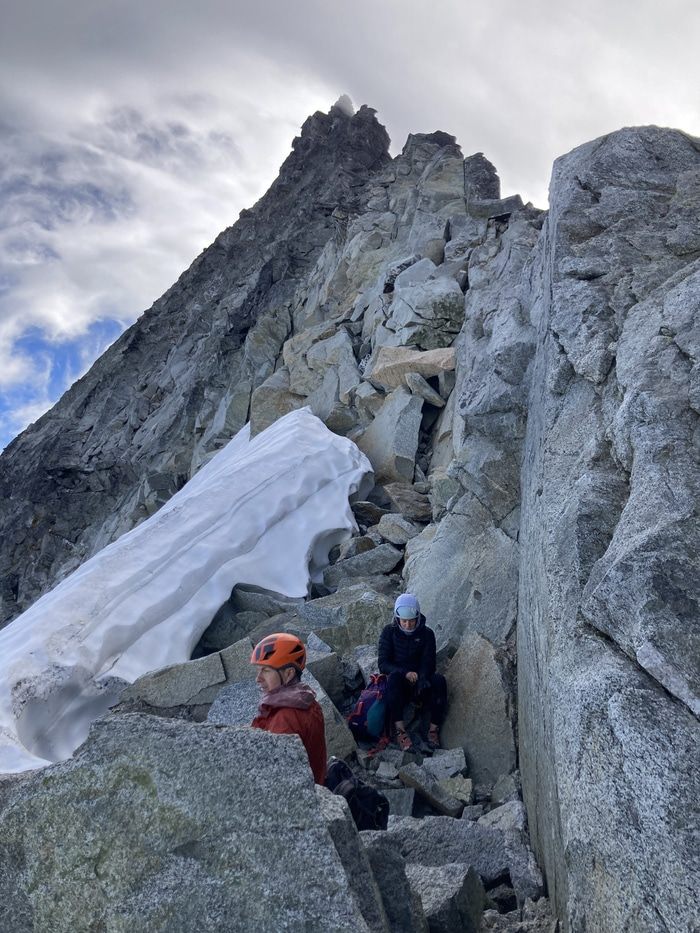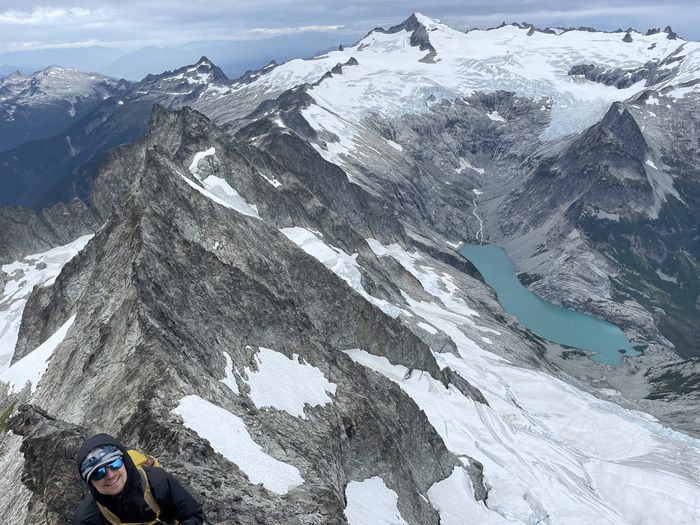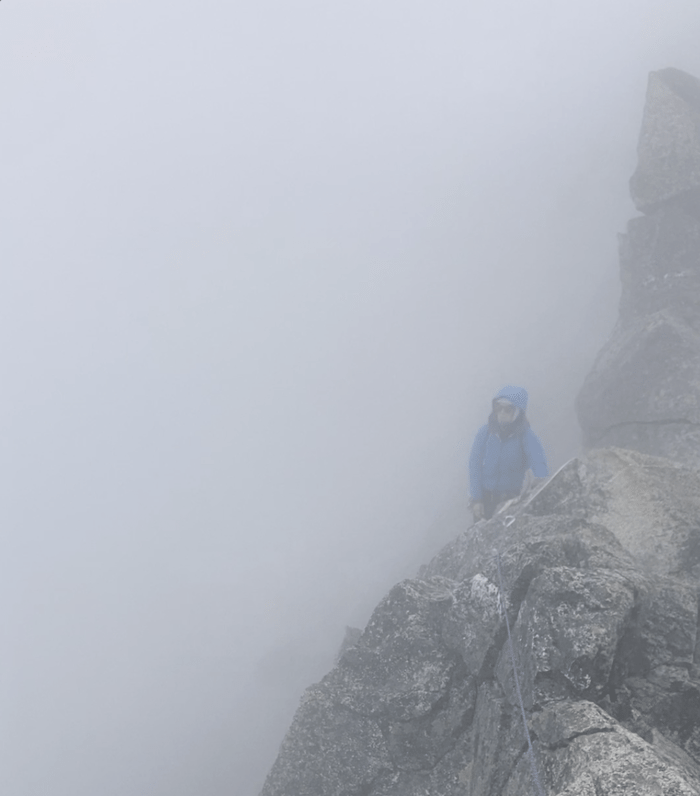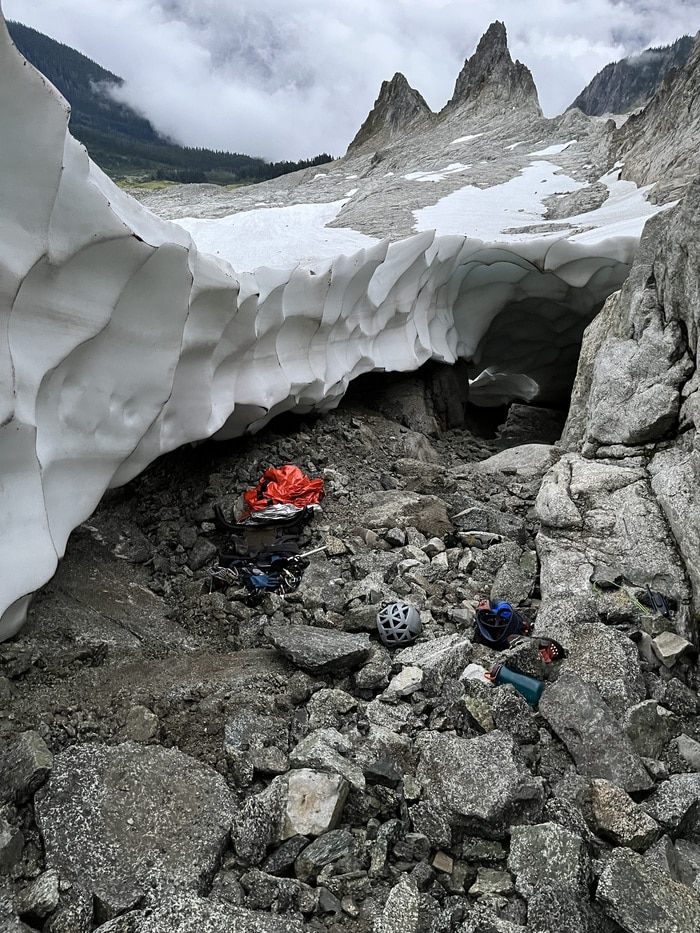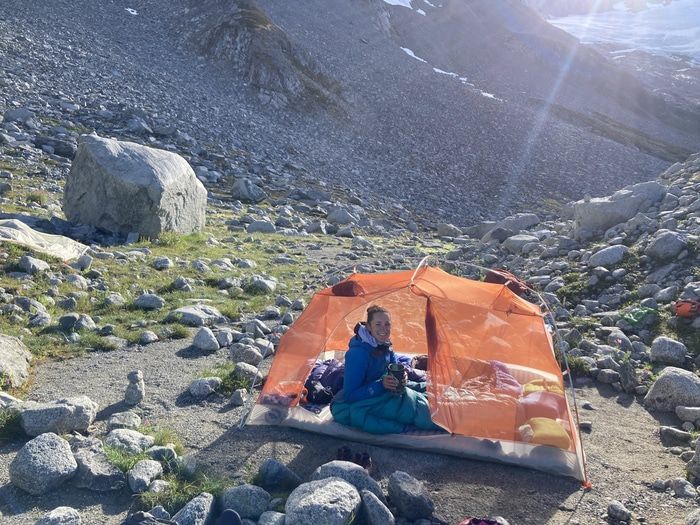Forbidden Peak
Late summer/early fall is my favorite season in the Cascades. The mornings are crisp but the evenings are fairly warm. You can get away with a light backpack because you don’t need to bring warm layers or serious snow gear. Eldorado, Sahale, Sherpa and Argonaut were all incredible climbs we did during this season in years past.
So after many weeks abroad, we were back in Seattle for Labor day and eager to get in at least one epic climb before the snow started to fall. Cassondra managed to secure a Saturday night permit for Boston Basin and we decided to try Forbidden Peak.
Finding a way across Boston Creek
The weather was chilly, with summit temperatures forecasted to be around 40 degrees with 15 mph winds and a chance of an afternoon misting totaling 0.01mm of accumulation. It wasn’t a great forecast for standing around and belaying the 1000’ or so of climbing but we knew what to expect and prepared to endure some discomfort.
Lance picked us up in Bothell at 7am and we drove to the Marblemount ranger station to pick up our permit. The parking lot was packed and we had to wait close to an hour for our number to be called. While we waited, I observed the other parties waiting in line. Lots of them were climbers and the ground was littered with ropes and helmets. I wasn’t sure how many were climbing Forbidden, but I made a mental note that we should get an early start the next morning.
Hiking across Boston Basin
By early afternoon we were hiking into Boston Basin, camping gear in tow. We completely missed the easy Boston Creek crossing because it was obscured by a large boulder downstream. Instead we left the trail and climbed upstream, eventually finding some shallow tributaries we could confidently get across. During one crossing I had to run back across the water to help Cassondra chase away a black bear that had followed us along the creek.
At this point it’s worthwhile to mention that we ran into another party on the hike in. They had climbed Forbidden, starting from the parking lot the previous morning. Their aim was to return to the parking lot that night, but the climb took longer than they expected and darkness fell when they were still at the notch. Not wanting to rappel the rest of the way in the dark and not bothering to bring down jackets on such a beautiful day, they huddled for warmth until it was light enough to descend the next day. We’re not the fastest climbers and I thought that camping would give us the extra time needed to avoid a similar stranding but less than 24 hours from now we’d find ourselves in similar circumstances.
Relaxing at camp
We made it to camp at 4pm, pitched the tent, filtered water and ate. Clouds moved in and there was a light breeze. We’d occasionally hear climbers yelling to each other on Forbidden. Two guys from Portland and a guided group of 3 would be going up with us the next day. We went to bed at 8pm and at some point during the night woke to a climbing party making a joyous entrance after a late night descent from the same peak we would begin climbing in just a few hours.
Summit day #
We woke at 3am. Packed a single rack and one 60 meter rope (and one backup 60m) into our Flash 22 packs. We opted for trail runners, microspikes and an ice axe for ascending the snow at the base of the climb. Navigating without a GPS track would have been difficult in the dark because you need to scramble up a number of rock slabs, some of which are vertical in places. The microspikes felt comfortable on the snow except near the top where the snow was steep and hard.
3am start
We straddled off the snow and onto the base of the rock, ditched our snow gear and started to scramble to the base of the Cat Scratch gullies. An incredible sunrise was unfolding behind us. The east face of Glacier Peak was the first to catch the light as it overpowered that “Cascade orange” light on the horizon. Mount Formidable and Johannesburg mountain lit up next. We put on our harnesses and waited for the Portland party of two to get a head start up the gullies.
It took us about 2 hours to climb to the notch. I think we got there in four long, easy pitches that felt secure with only 2 or 3 pieces of protection per pitch. We used some established rappel stations for belaying and noted their location for the descent. We took a quick break at the notch and started up the west ridge around 8:30am, beginning with the airy step. The next few hours were slow but steady progress. I led each pitch and then belayed Cassondra and Lance up. They were both tied into the end of my rope, about 15 feet apart. No one ever fell.
Roping up
At some point, the guided party of 3 caught up and passed us. Some pitches I ran out of rope just shy of a rappel anchor and had to resort to building my own belay stations and in other places I only noticed a nearby rappel anchor after I already built my own. This ate up a lot of time and we could see rain clouds building to the west while we were still two pitches short of the summit.
Starting the Cat Scratch gullies
On this day, I surprised myself by not really needing to go on. It looked like what remained of the ridge ahead was very similar to the climbing we had already done. We had succeeded in getting past the crux pitch and being so close to the summit, the views would likely be similar to what we had experienced all day. On top of that, we knew we were slow and wanted to get a head start on the rappelling and down climbing ahead of others. It was one of the wisest decisions we ever made.
The wind was starting to pick up as we rappelled, flinging the rope strands wildly and frustrating all attempts at throwing the rope. We rappelled twice, ending at the base of the crux pitch and then down climbed a horizontal pitch along the ridge. We did another rappel and slowly began down climbing the rest of the route to the notch. During this time the air became saturated with moisture and although it wasn’t raining it became very foggy and damp. Soon, it became hard to see more than 20 feet. My best guess is that we arrived at the notch around 7pm.
Top of the Cat Scratch Gullies
At this point we had about 30 minutes before nightfall. Everyone had passed us and we were the last party left on the mountain. Cassondra, who’s normally hotter than a furnace was cold and shivering. The wind was howling and it had started to rain. Given the weather, sleeping on a rock ledge at 8000’ evoked images of great suffering so we decided we had to keep descending in the dark.
Luckily, we saw the first rappel station on our way up and we found it again just as darkness fell. We turned on our headlamps and realized that the fog and moisture reflected most of the light making them useless beyond a distance of 10 feet. We knew the next two rappel stations were below us and a third was on the other side of the gully. After that we’d be descending into the foggy unknown. We moved as fast as we could, water running down our hands as the rappels squeezed water out of the rope. Each time we made a rappel, we managed to find another rappel station. Some were only 50’ away but not wanting to run the risk of descending too far we had to stop at every one of them.
West Ridge from the notch
It was around eleven pm when we came upon the last rappel station. For extra insurance, we took out the second rope and did a long double rope rappel. I made a big mistake here. Even though we couldn’t see anything, we suspected that we could rappel straight down onto the snow from here. Unfortunately, we had left our snow gear in the rocks below to our right and without ice axes or crampons we’d slide right off the mountain. Instead I chose to rappel diagonally towards where our gear was stashed, crossing some terrible choss, un-equalizing the rappel anchor and eventually making the ropes impossible to pull.
I understand better now why people make bad choices in these situations. It’s often the choice that promises to end the suffering, the cold and the fatigue the fastest. The right choice was to rappel straight down to the snow and prusik back up if there wasn’t a safe place to stand but after hours of being pelted by wind and rain I took the option that I hoped would protect us from the elements the fastest.
Starting to rappel down
But we were finally down off the rock, next to the glacier and back in possession of our snow gear. The wind wasn’t much better here and it was still raining. We knew down climbing the snow would be difficult and given our present condition we decided we should wait until daylight. We tried to find a comfortable place to sleep, even exploring some caves underneath the glacier but ended up having to bivy on a slanted pile of rocks with melt water running through them. Lance propped himself on his backpack and Cassondra and I squeezed into a single bivy.
Weather moving in
The night stretched on. The rain didn’t stop and the wind gusts would chill you to the bone. We tried to sleep but the sharp rocks would pierce into our knees, hips and shoulders. We shivered non-stop. Eventually the numbness of a pinched nerve would crescendo forcing us to roll over, the bivy tearing on the sharp rocks and our precious body heat escaping in the process. At 2am I couldn’t take it anymore. I began clearing rocks and used an ice axe to shape the wet sand underneath into a sleeping platform. Cassondra and I unfurled our remaining dry bivy sack and tried to get comfortable for the next 4 hours.
Bivy next to the glacier
At some point the clouds cleared momentarily revealing a single point of light. Jupiter. I remember staring at it entranced. It seemed unusually large and bright during that long dark night. I think a mind devoid of any thoughts and staring up at the darkness for hours can really appreciate that kind of thing.
I remember falling asleep once or twice and eventually the sky began to turn from black to dark gray. The rain had stopped but there would be no sun. Packing up was incredibly cold and I kept wearing the bivy as a shirt to stay warm. None of us had the energy to climb back up to save the ropes so we carefully descended the snow. Halfway down we met a party on their way up and exchanged contact info on the off chance that they managed to pack out our ropes (they did!). At this point the steepness of the snow eased up and the sustained movement was starting to generate body heat. We arrived back to camp and were greeted by the guide who had been with us on the climb the day before. He held a fresh brewed cup of coffee he had made for us. Thanks Jack from Indigo Alpine Guides.
Coffee and ramen back at camp
At camp we ate some hot ramen. I still remember it tasting amazing. Deprivation can really enhance the pleasure of everyday things. Things were back to normal now and we took a casual pace back to the parking lot, stopped at Wendy’s and slept most of the rest of the day.
Cassondra and I had an amazing streak of successful summits when we first met that made us feel unstoppable. The past year was punctuated by a few disappointments but I think we’re just trying things that are harder for us and that’s okay. In the end it’s mostly about getting out there and getting back to the car.
